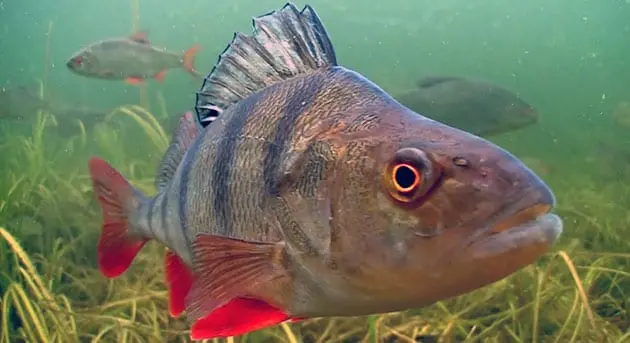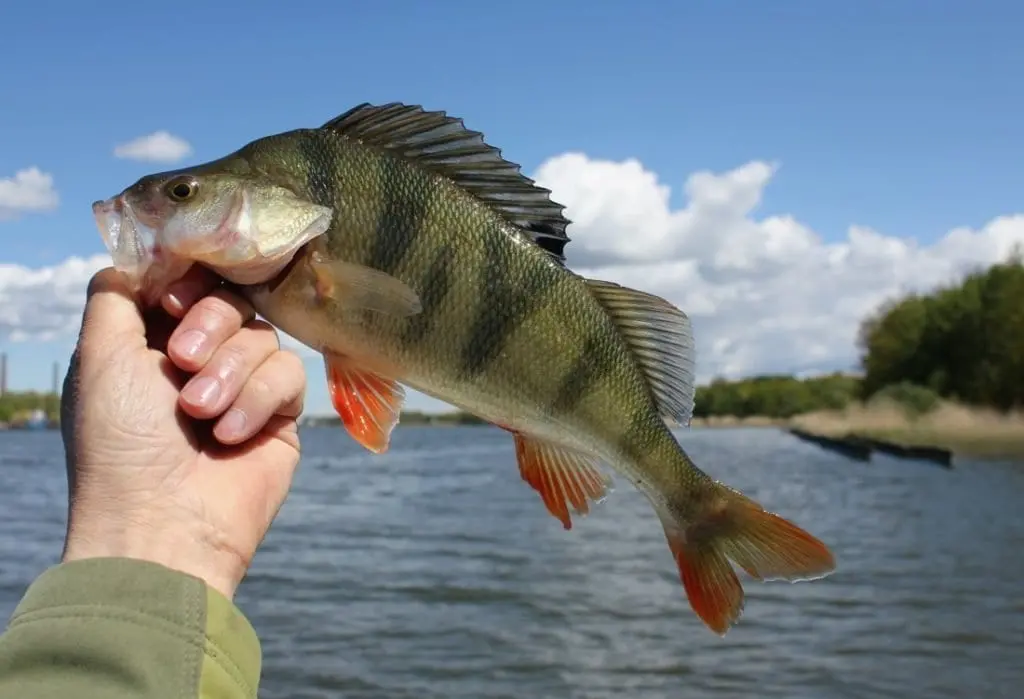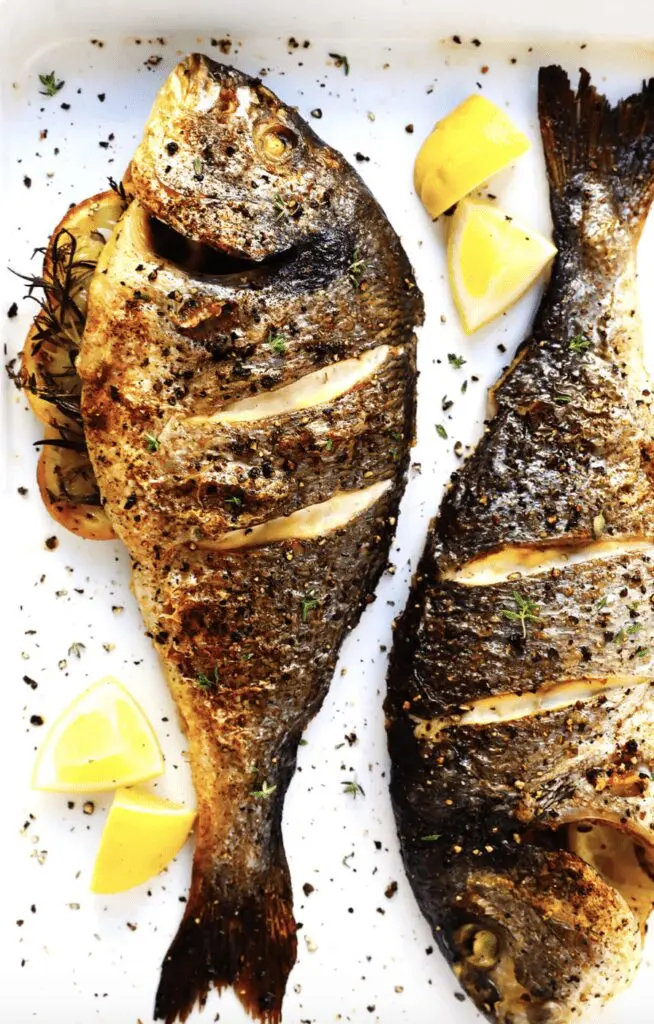Contents
Description
The common perch (Perca fluviatilis L.) is dark green on top; the sides are greenish-yellow, the belly is yellowish, 5 – 9 dark stripes stretch across the body, instead of which there are sometimes dark irregular spots; the first dorsal fin is gray with a black spot, the second is greenish-yellow, the pectorals are red-yellow, the ventral and anal fins are red, the caudal, especially below, is reddish.

The color changes significantly depending on the color of the soil; besides, during the breeding season, the colors of sexually mature specimens distinguishes by a greater brightness of flowers (breeding attire). The female does not differ from the male in color. The body’s shape is also subjected to significant fluctuations; there are perches with a very high body (strongly humped).
The length usually does not exceed 30 – 35 cm, but it can be twice as long. Usually, the weight does not exceed 0.9 – 1.3 kg, but there are specimens of 2.2 – 3 kg, even 3.6 kg, 4.5 – 5.4. Very large river perches differ not so much in length as in height and thickness.
Distinctive features of the genus: all teeth are bristly, set on the palatine bones and vomer, tongue without teeth, two dorsal fins – the first with 13 or 14 rays; anal fin with 2 spines, pregill and preorbital bones serrated; small scales; head dorsally smooth, 7 gill rays, more than 24 vertebrae.
Gill covers with 1 spine, scales firmly set, cheeks covered with scales. Three species live in the fresh (and partly brackish) waters of the northern temperate zone.
Perch benefits

Firstly, perch meat is rich in nicotinic and ascorbic acids, fats, proteins, B vitamins, tocopherol, retinol and vitamin D.
Secondly, the meat of this river fish is rich in sodium, sulfur, phosphorus, potassium, chlorine, iron, calcium, zinc, nickel, iodine, magnesium, copper, chromium, manganese, molybdenum, fluorine, and cobalt.
Thirdly, perch meat has a good taste, it is fragrant, white, tender, and low-fat; besides, there are not many bones in the fish. Perch is well boiled, baked, fried, dried, and smoked. Fish fillets and canned food are very popular.
Calorie content
There is only 82 kcal per 100 grams of perch meat, so it is a dietary product.
Proteins, g: 15.3
Fat, g: 1.5
Carbohydrates, g: 0.0
Perch harm and contraindications
You should not abuse perch meat for gout and urolithiasis, in addition, it brings harm in case of individual intolerance.
Perch in cooking
By taste, sea bass is at the forefront among all sea fish. There are many recipes for this fish. It is well when boiled, stewed, baked with vegetables, fried. In Japan, sea bass is one of the main ingredients in cooking sushi, sashimi, and soups. This fish is most delicious salted or smoked.
Perch baked in scales

Ingredients
- River perch 9 pcs
- Sunflower oil 2 tablespoons l
- Lemon juice 1 table l
- Seasoning for fish 0.5 tsp.
- Pepper mix to taste
- Salt to taste
Cooking 20-30 minutes
- Step 1
Cut off all the sharp fins from the perches with scissors. We will remove the insides and wash the fish well. - Step 2
Let’s make a marinade from sunflower oil, lemon juice, and your favorite spices. You can take a ready-made mixture for fish. With this marinade, grease the belly of the perch and leave to marinate for 10-20 minutes. - Step 3
Cover the baking sheet with foil and lay out the fish. - Step 4
We bake in the oven for 30 minutes at T 200 degrees. - Step 5
The baked perch is done. - Enjoy your meal.









